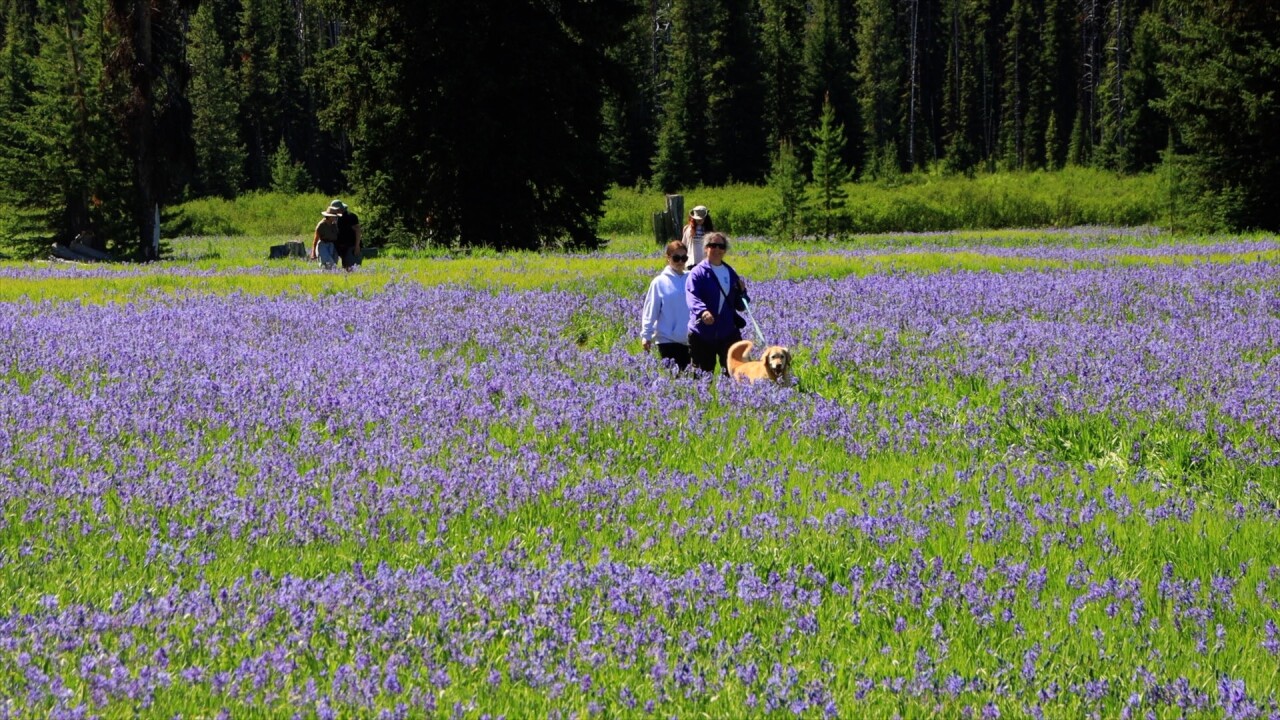MISSOULA — It's a scene of beauty, but also full of history. And this week, Packer Meadows at Lolo Pass is showing off at the peak of one of the best blooms in years.
Fueled by the potent combination of this spring's wet, and hot weather, Packer Meadows is putting on a real performance, as the camas are bursting forth in bloom. While we've had some great days to get out and appreciate nature, it has a much deeper symbolism for the tribal peoples of the Pacific Northwest -- the celebration of a new season and new life.
"This is one of the main sustaining avenues of life for 11,000 plus years if that puts it in any kind of perspective, you know," explained Master Tribal Interpreter Roger Amerman. "And they gathered the old-time ladies gathered this, and dozens of pounds each day. You know, up to 50-pounds per lady."

Amerman and his son are busy this week teaching the importance of camas to not only the Nimiipuu People, or Nez Perce, but all Northwest tribes.
"The traditional religion, longhouse religions, they have their biocentric meaning. They have to have the non-human elements of the landscape incorporated into the religion and present," Amerman told MTN News. "Not just in a spiritual form, but in a food form or the person wearing it in some form or other. It has to be incorporated. These items are in the religion. Without them, there is no religion."
Click here to view a photo gallery of the beauty of the camas at Lolo Pass.
The tribe still uses tools to dig the camas roots, or bulbs, each fall. Packer Meadows is special because it showcases how most Northwest meadows looked before colonial development, and how tribal agriculture made a difference.
"All this purple is a result of the influence of tribal people harvesting and cultivating in here," Amerman said. "What you would see in back of you if there wasn't traditional harvesting historically and prehistorically would be a mosaic of plants. You see a lot of plants that would be competing with this, including the famous or infamous white camas, which is deadly."

What about Lewis and Clark's two stops here? Amerman says they developed a taste for salmon, and camas, but were wise enough to trade, leaving preparation to the experts. "To just trade nice items with the natives that they encountered along the Lewis and Clark journey, exploratory journey and just keep it. Keep fed and keep safe."
We asked Amerman what it's like to see young and old wandering the meadows.
"I've seen the little kids. I've seen the elders coming out here, native and non-Native. And it's just like their whole vibe, it just becomes that much more positive. We expected to see beauty, but on top of that beauty is this knowledge and we just had that. The response has been overwhelming." Amerman said with a big smile.
Amerman will be at Packer Meadows again Friday, from 10 a.m. to 3 p.m. Mountain Time. Lolo Pass Visitor Center will also re-open this weekend. The blooms will only last a few more days and you might consider carpooling if you want to visit because of limited parking. Also, be respectful and follow the trails.









